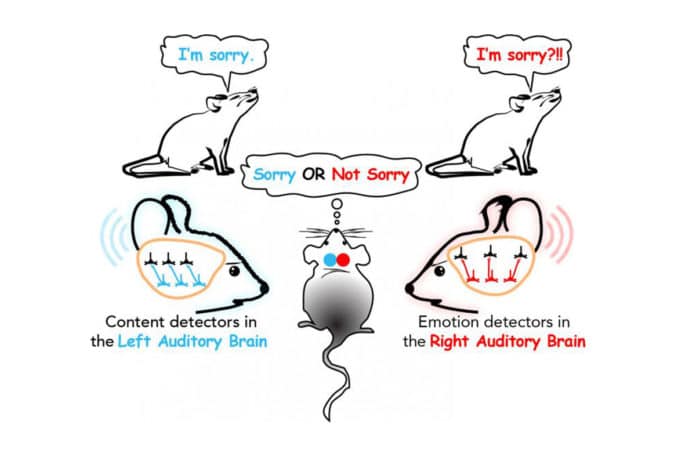More than 150 years ago, Paul Broca reported that the brain’s speech production center was located in the left hemisphere. Since then, behavioral and imaging studies in humans have confirmed this functional asymmetry.
Even though scientists broadly acknowledged from that point forward that the left half of the brain dominates language processing, the purposes for this lateralization have remained unclear.
The lateralization of language processing in the auditory cortical areas of the brain has been known for over 150 years, but the function, neural mechanisms, and development of this hemispheric specialization are still unknown.
Now a new study shed light on this mystery. Scientists compared the structure, function, and development of each auditory cortex (ACx) in the mouse to look for specializations that may underlie lateralization. Using Fos brain volume imaging technique, scientists found different specialties between the left and right auditory processing centers of the brain. They also observed differences in their wiring diagrams that may explain their distinct speech processing functions.
According to scientists, the study could lead to a better understanding of specific mental health problems.
One common feature of mouse vocalizations are syllables with downward jumps in pitch. The left auditory cortex in the mouse demonstrated greater activation in light of these tone sequences, while the right auditory cortex appeared to be more of a generalist, reacting to any tone sequence.
Specializations to detect specific tone sequences prevalent in vocalizations could underlie the left auditory center’s dominance in processing the content or meaning of speech while the right auditory center’s generalist scheme could underlie its dominance in processing the intonation or prosody of speech.
Hysell V. Oviedo, a biology professor with The Graduate Center, CUNY and the City College of New York said, “Notably, the specialized differences between the left and right sides are not innate. Rather, the differences between their circuitry depend on the acoustic environment in which the mouse was raised.”
“Our discovery of the differences in the wiring diagram provides the opportunity to study the molecular phenotypes that shape the development of vocalization processing and how it goes awry in neurodevelopmental communication disorders.”
“Through a battery of experiments such as 3D whole-brain imaging, electrophysiology, and optogenetics, the researchers analyzed properties including synaptic connectivity, axonal projections, and development of both hemispheres.”
“Our study is the first to show that there are significant differences in the wiring diagram of the language centers in the brain that could underlie their distinct speech processing capabilities.”
The study is published in the journal Nature Communications.
